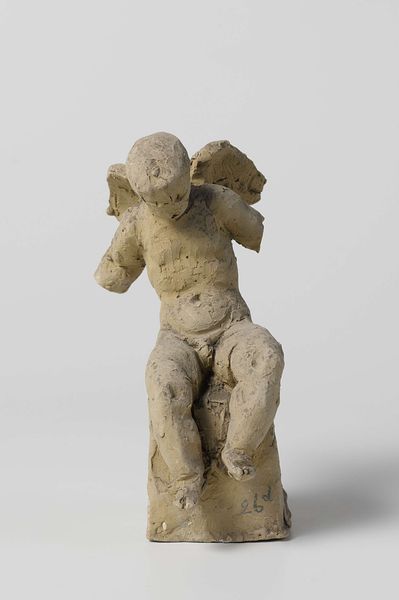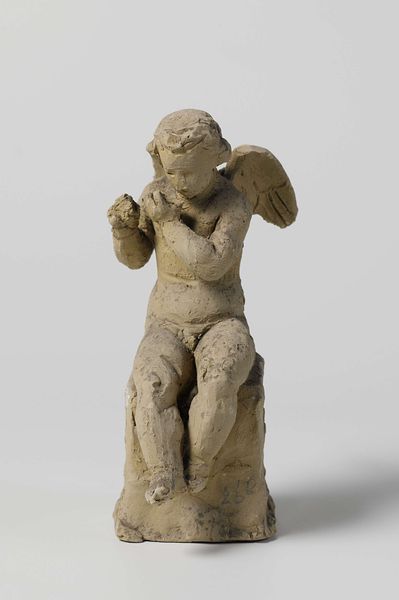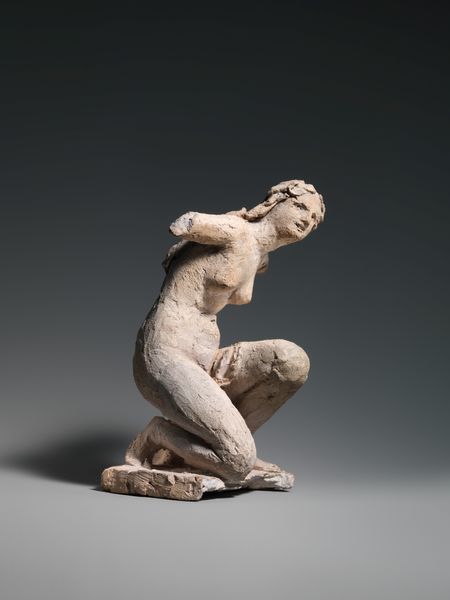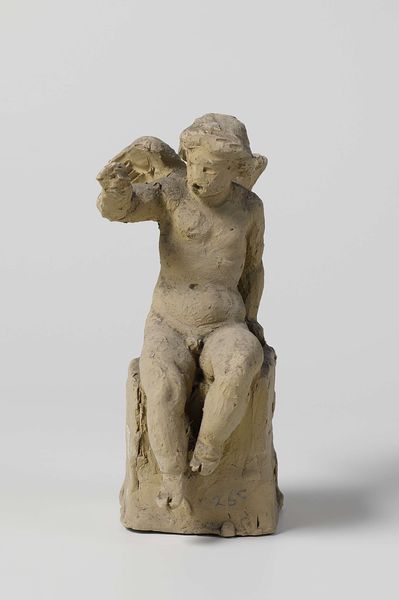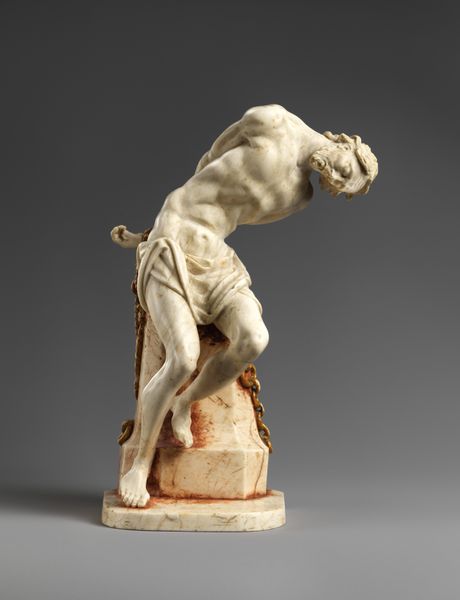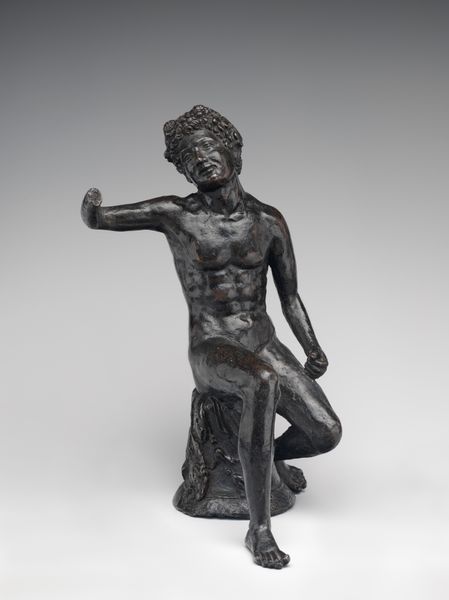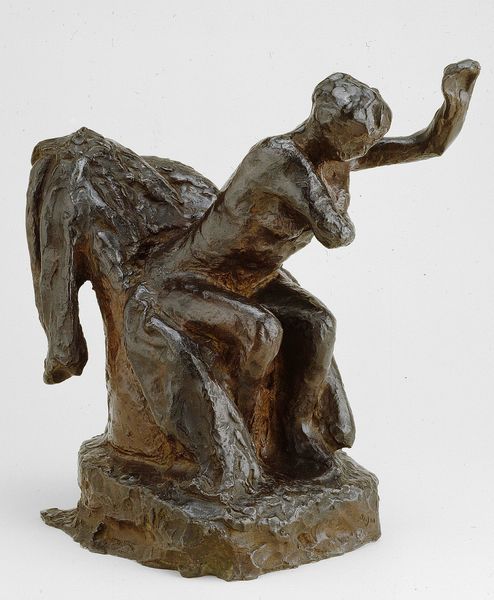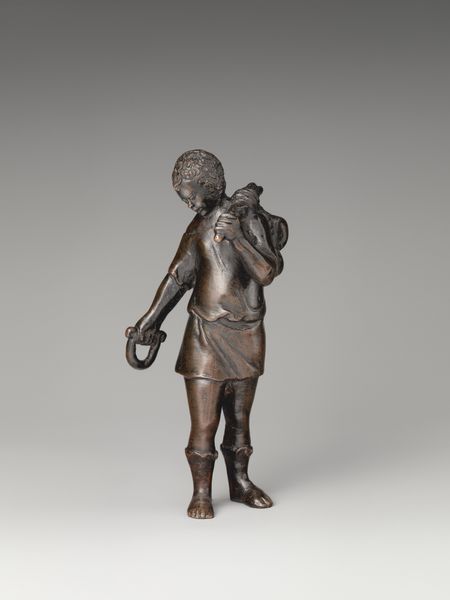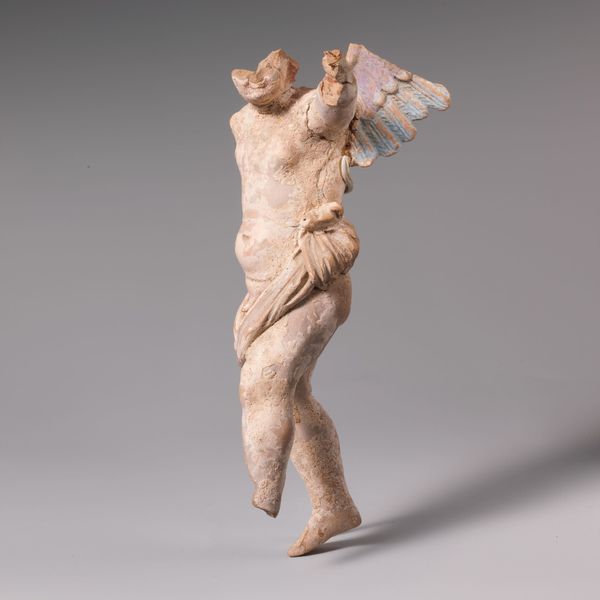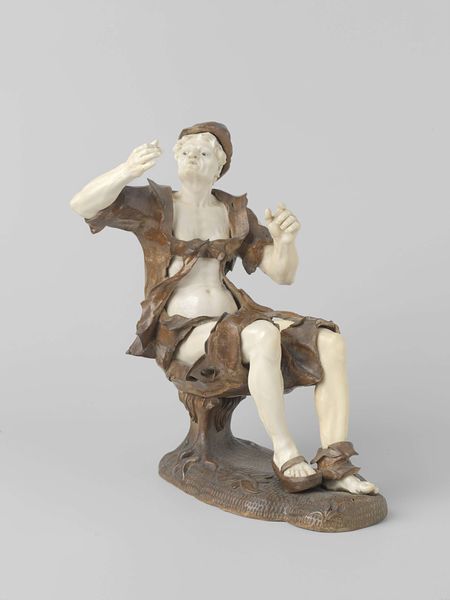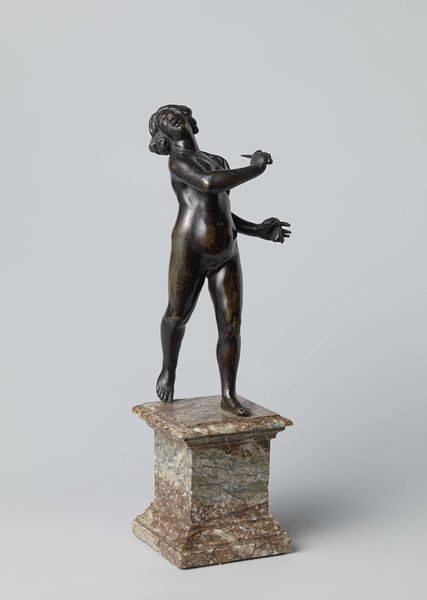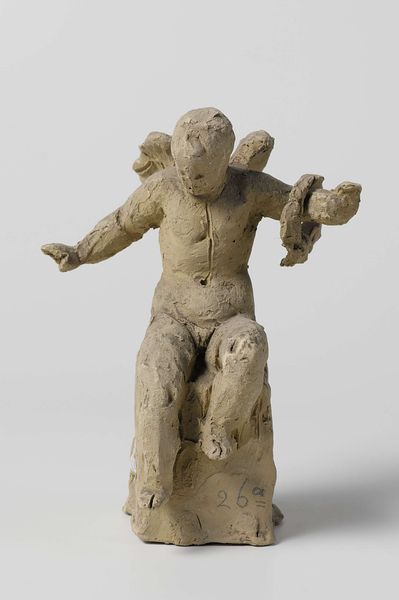
bronze, sculpture
#
neoclacissism
#
sculpture
#
bronze
#
figuration
#
sculpture
#
history-painting
Dimensions: height 22.5 cm, width 16.5 cm, depth 8.8 cm
Copyright: Rijks Museum: Open Domain
Eugène Lacomblé modeled this sculpture of a naked youth playing ring toss from plaster, sometime in the late 19th century. Plaster is a humble material, quick to set and easy to work, making it a favorite for preparatory models. Here, the material's inherent qualities—its slightly rough texture and matte, off-white color—influence the sculpture's appearance. You can almost see the artist's hand in the modeling, giving the figure a sense of immediacy. Lacomblé likely used simple tools to shape the plaster, building up the figure layer by layer, and adding details like the striations on the tree trunk. In the 19th century, plaster was also used to create mass-produced decorative objects. By emphasizing the handmade quality of this sculpture, Lacomblé elevates it above mere craft, challenging the traditional hierarchy between fine art and decoration. His choice of material and process is key to understanding the work's meaning and cultural significance.
Comments
No comments
Be the first to comment and join the conversation on the ultimate creative platform.

